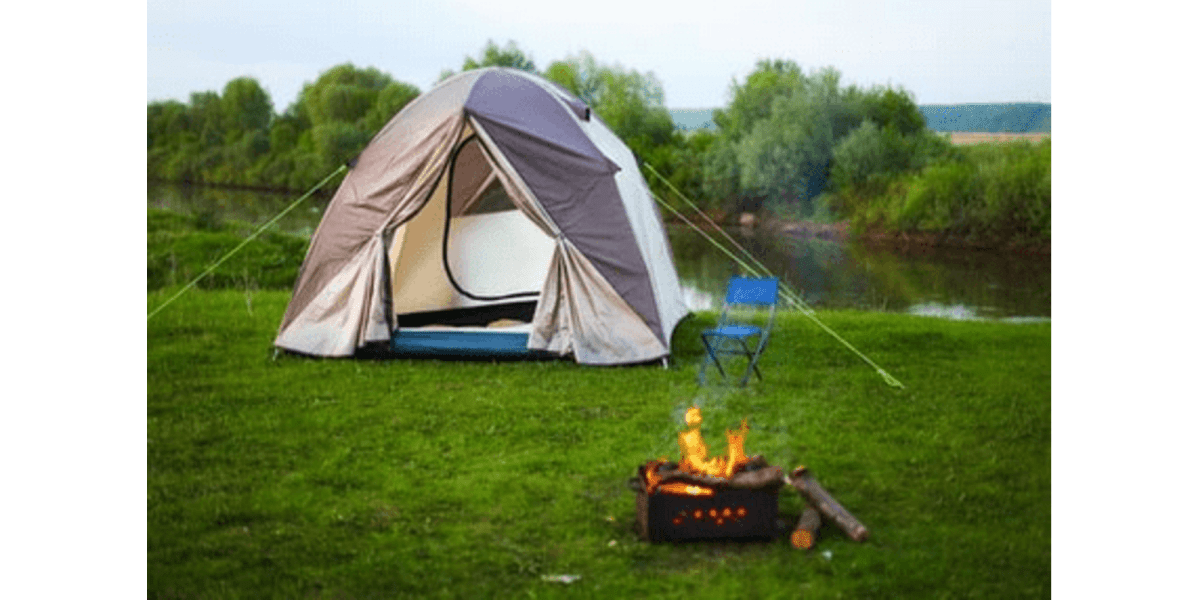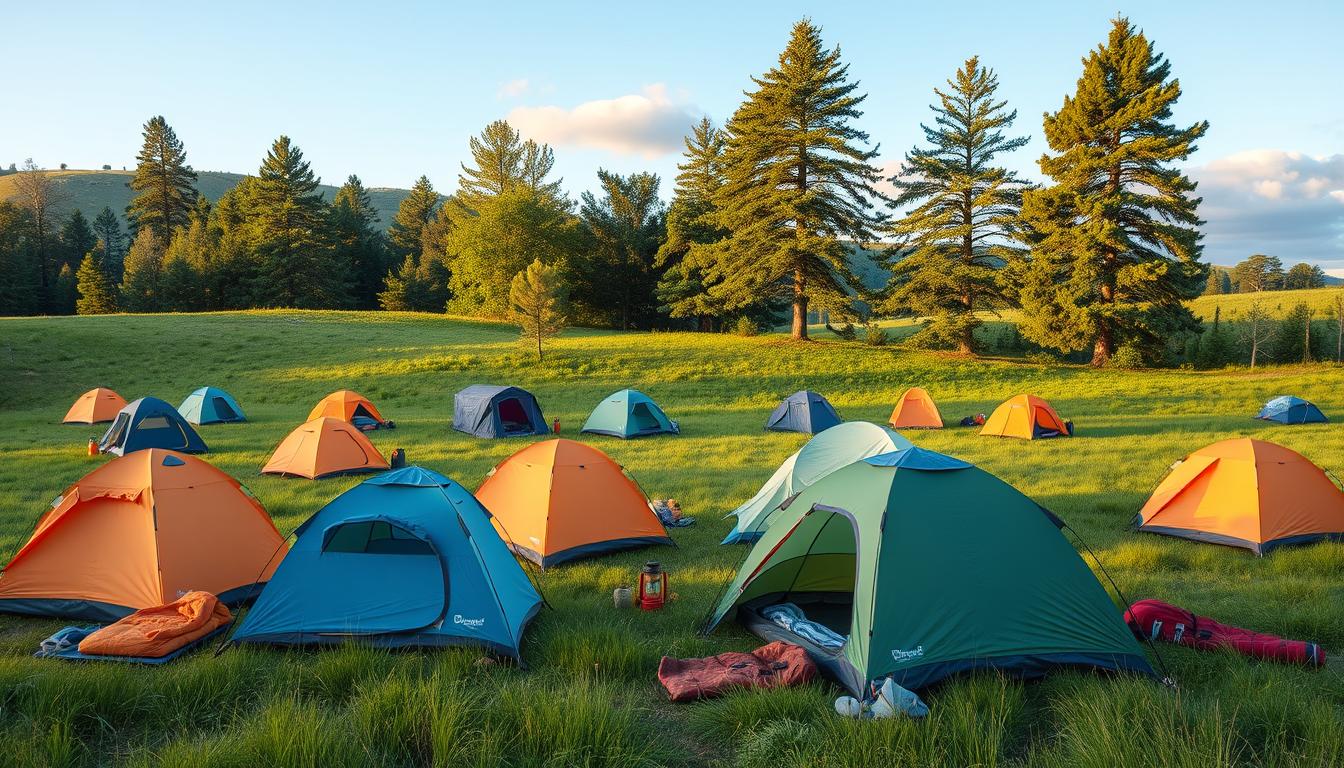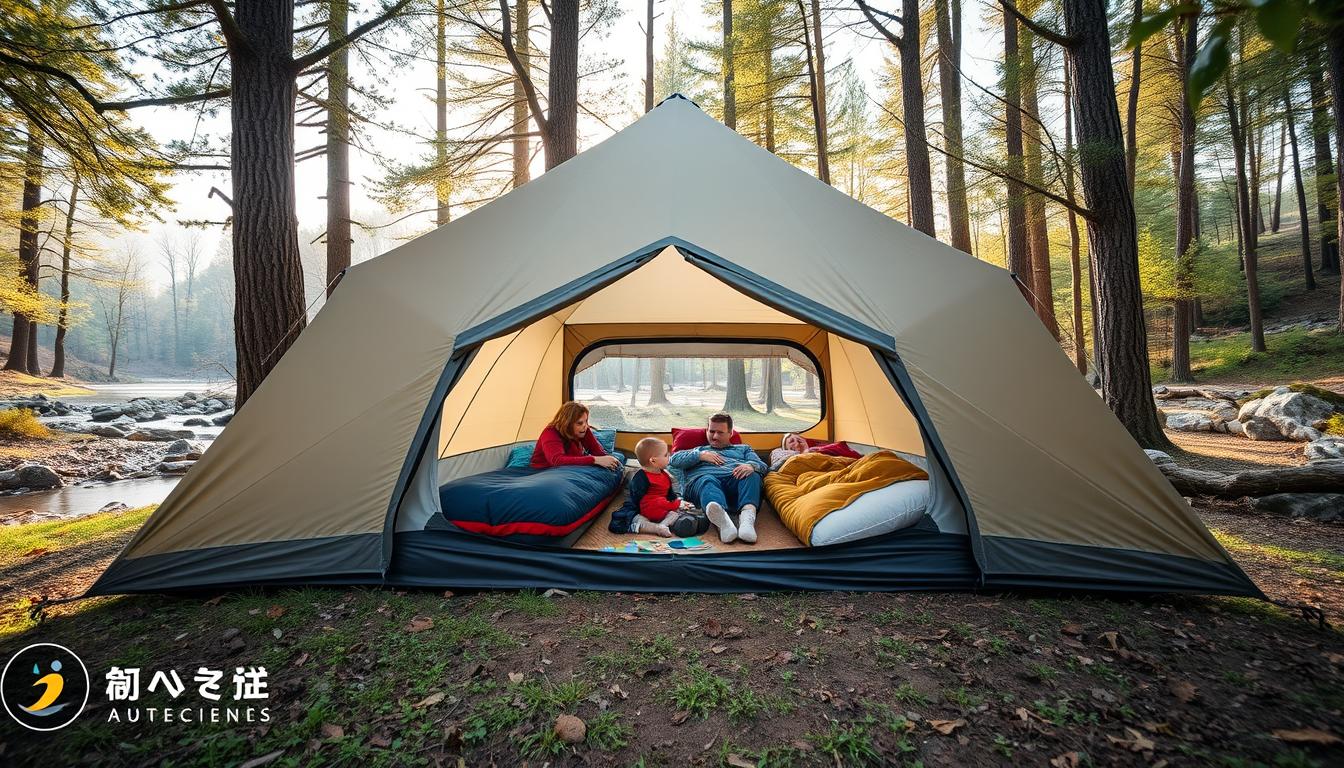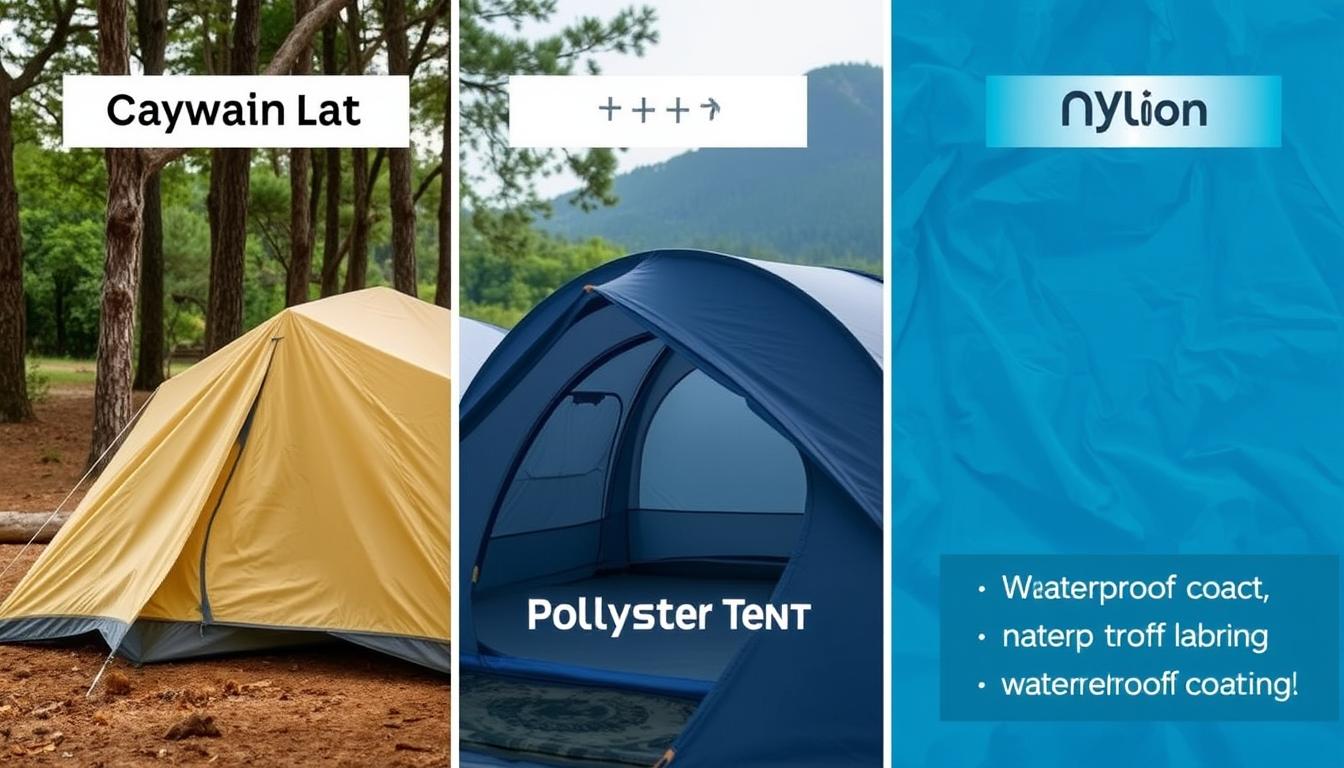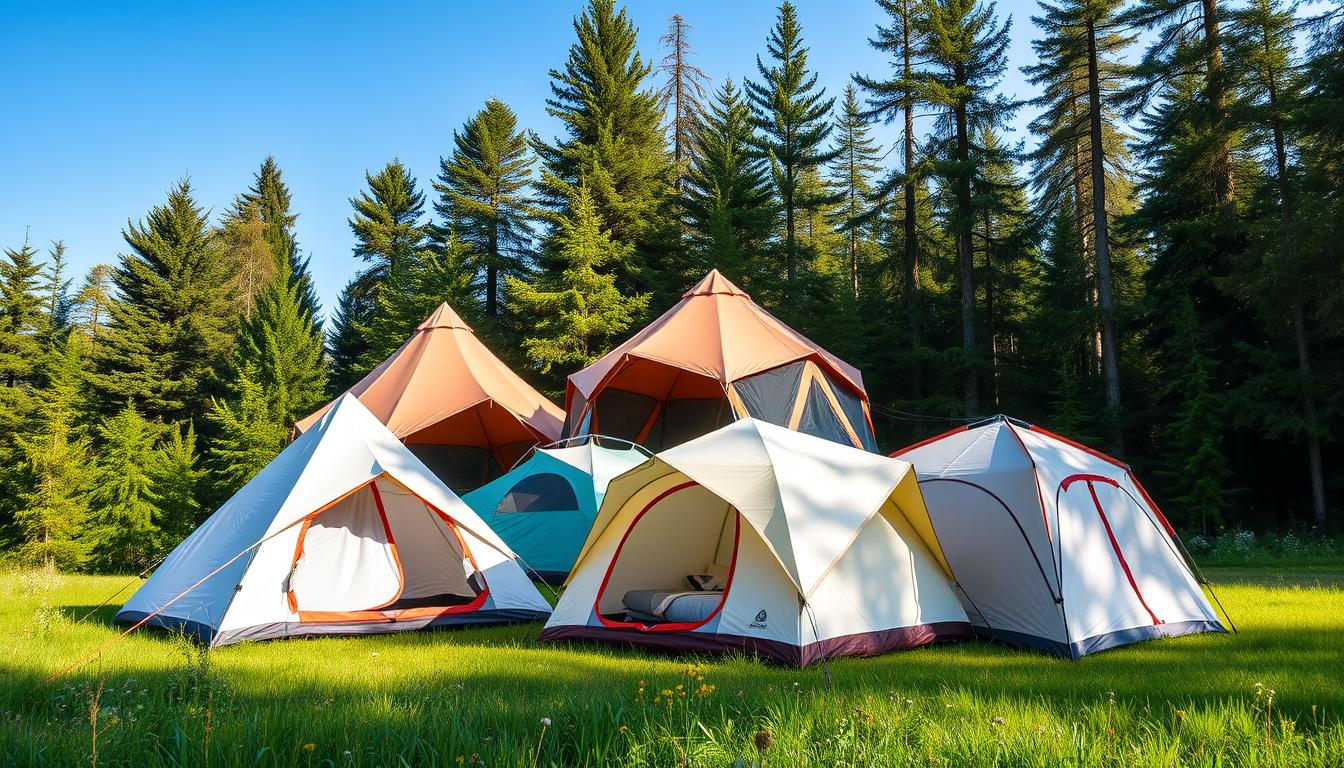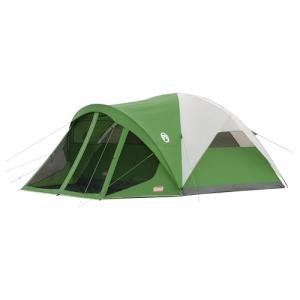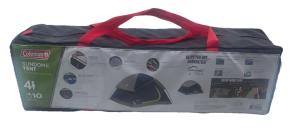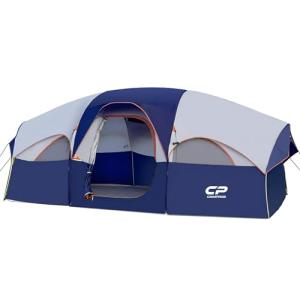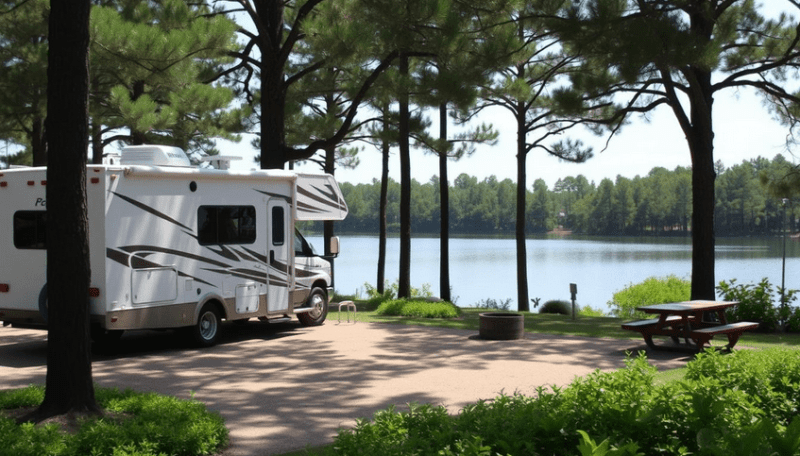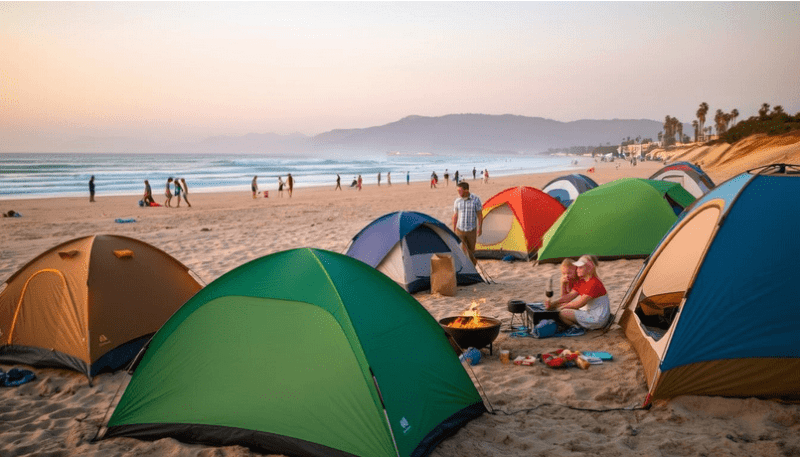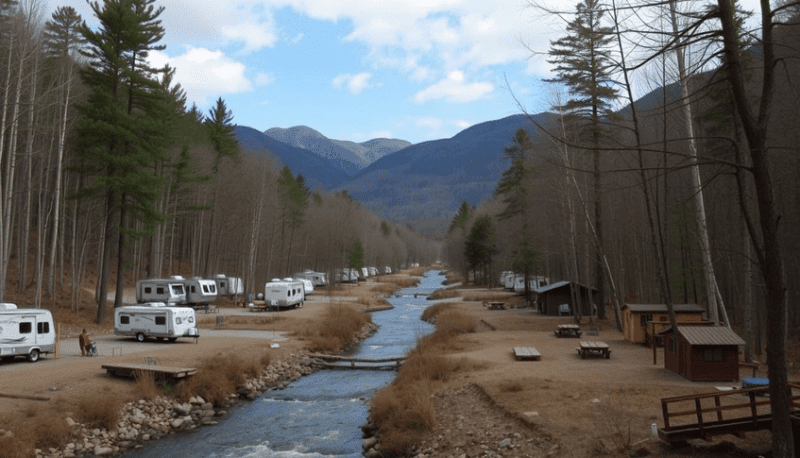Starting your first camping trip means picking the right tent. The camping world can feel big, but finding a good tent for beginners is easy. To choose the best tent, know what you need and where you'll camp.
There are many tent types, like dome, cabin, and instant tents. Instant tents set up in just 5 to 10 minutes. For your first trip, a 3-season tent is best. It's good for spring, summer, and fall weather.
Your first tent should be comfy, strong, and not too expensive. You'll spend $50 to $80 for a good tent. Some top-quality tents can cost up to $400. Look for a tent that fits your camping style and keeps you dry and safe.
Key Takeaways
- 3-season tents are ideal for most beginner campers
- The budget ranges from $50 to $400, depending on the quality
- Consider tent size and capacity for comfort
- Instant tents offer quick and easy setup
- Prioritize weather resistance and durability
Understanding Different Types of Camping and Their Tent Requirements
Choosing the right tent starts with knowing your camping style. Camping experiences vary, and the right tent is key for a good trip. Whether you're car camping or exploring the backcountry, the right tent is essential for comfort and function.
https://youtube.com/watch?v=BVzmHPOdVBs
Camping gear needs vary widely. The right tent can make your trip enjoyable, not just challenging. It's important for both beginners and seasoned campers to prepare well.
Car Camping vs Backpacking Needs
Car camping lets you choose bigger, more feature-rich tents since weight isn't a big deal. Backpacking tents, on the other hand, are light and compact. Beginners should think about their camping style when picking a tent.
- Car camping tents: Heavier, more spacious
- Backpacking tents: Lightweight, compact
- Tent weight: Critical for trail camping
Established Campgrounds vs Backcountry Camping
Campground conditions affect tent choice. Established camps have amenities like water and electricity, allowing for more comfort. Backcountry camping requires self-sufficiency and light and durable gear.
| Campground Type | Tent Characteristics | Recommended Use |
|---|---|---|
| Established Campgrounds | Larger, more comfortable | Family camping trips |
| Backcountry Camping | Lightweight, weather-resistant | Experienced outdoor adventurers |
Weekend Warriors vs Regular Campers
How often you camp affects your tent choice. Weekend warriors might look for budget-friendly options. Regular campers might choose higher-quality, durable tents. Think about your long-term camping goals.
"Choose a tent that matches your camping lifestyle, not just your current adventure." - Outdoor Gear Advice
With 45% of campers looking to try new things, picking the right tent is crucial. Whether you're new to camping or have years of experience, knowing your needs will help you find the perfect tent.
Essential Tent Size Considerations
Choosing the right tent size is key for a great family camping trip. Your tent should have enough room for sleeping, storing gear, and relaxing. Knowing how much space you need helps you pick the right gear.
Person Capacity Guidelines
Tentmakers give size recommendations, but these can be off. Here's a simple guide to pick the right tent:
- Basic comfort: 20 square feet per person
- Comfortable camping with gear: 30-40 square feet per person
- Recommended people per tent size:
| Tent Size | Recommended Capacity | Comfort Level |
|---|---|---|
| 2-Person Tent | 2-3 People | Snug Fit |
| 4-Person Tent | 3-4 People | Comfortable |
| 6-Person Tent | 4-5 People | Spacious |
Space for Gear Storage
A tent vestibule is a big plus for storing camping gear. Think of it as your outdoor closet - great for muddy boots, backpacks, and wet clothes.
Sleeping Arrangement Options
Comfort is king when camping - choose a tent that accommodates your sleeping preferences!
Today, you can set up your camp in many ways:
Pro-tip for your camping checklist: Pick a tent bigger than your group size. This ensures you have plenty of room for sleeping and storing gear.
Weather Protection and Seasonality Features
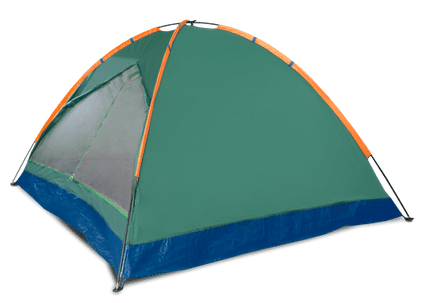
Choosing the right tent is key for a good camping trip. Most people pick 3-season tents for their all-around protection. Knowing about tent seasonality helps you find the best tents for your adventures.
Tent weatherproofing has important features to keep you dry and comfy:
- Rainfly coverage
- Sealed seams
- Water-resistant fabrics
- Ventilation systems
Different tent seasons have their benefits for campers:
| Tent Type | Weather Protection | Best Used |
|---|---|---|
| 2-Season Tent | Limited protection | Warm, dry summer conditions |
| 3-Season Tent | Moderate protection | Spring, summer, fall camping |
| 4-Season Tent | Extreme weather protection | Winter and alpine environments |
"Proper tent waterproofing can make the difference between a memorable adventure and a miserable experience."
When picking a tent, consider the weather you'll face. Lightweight backpackers might look for different features than car campers. Always check the tent's waterproof rating to match your camping spot.
Understanding Tent Construction Materials
Choosing the right tent materials is key for a great outdoor adventure. The type of materials used affects how well your tent performs, lasts, and feels in different weather. Let's explore what makes a tent great.
Fabric Types and Durability
Tent materials are vital for outdoor gear performance. Modern tents often use three main fabric types:
- Nylon: Lightweight and affordable
- Polyester: More UV-resistant and stable
- Canvas: Heavy-duty and great for long-term camping
Pole Materials and Strength
The skeleton of your tent, its poles, affects its stability and how easy it is to set up. Different pole materials offer unique benefits for camping gear:
| Pole Material | Weight | Strength | Price |
|---|---|---|---|
| Aluminum | Light | High | Moderate |
| Fiberglass | Heavy | Medium | Low |
| Carbon Fiber | Ultralight | Very High | Expensive |
Rainfly and Waterproofing
Keeping dry in the rain is crucial for outdoor adventures. A good rainfly stops water from getting in and keeps you dry. Look for these waterproofing features:
- Full-coverage rainfly
- Sealed seams
- Waterproof rating of at least 1500mm
"A good rainfly is your first line of defense against nature's unpredictability." - Camping Experts
When picking waterproof tents, think about the denier count and fabric coating. They ensure you stay dry on your camping trips.
Tent Design Styles and Their Benefits
Choosing the right tent design is key for great outdoor adventures. Knowing the different types of tents helps you pick the best one.
- Dome Tents: The most common, they're very stable
- Freestanding design with cross-pole structure
- Handles snow and strong winds well
- Great for 1-4 people
- Cabin Tents: Lots of room inside
- Near-vertical walls for standing
- Ideal for family camping
- Max headroom
- Tunnel Tents: Spacious and versatile
- Best headroom in tents
- Great for groups
- Good wind resistance
"The right tent design makes camping amazing." - Outdoor Gear Expert
Think about your group size, where you'll camp, and the weather. Dome tents are popular for 1 to 8 people. They protect well against the outdoors.
| Tent Design | Best For | Key Advantage |
|---|---|---|
| Dome | Solo to Family Camping | Wind Resistance |
| Cabin | Family Camping | Standing Room |
| Tunnel | Group Camping | Spacious Interior |
Choose a comfy, durable tent that fits your outdoor plans.
Important Comfort Features and Amenities
Choosing the right tent is more than just finding a place to sleep. The comfort features and amenities can make your camping trip amazing. Smart campers know that the tent's design is key to enjoying the outdoors.
Ventilation Systems
Tent ventilation is key for comfort while camping. Good airflow keeps the inside cool and reduces moisture. When picking outdoor gear, look for tents with:
- Multiple mesh windows
- Adjustable roof vents
- Strategic air circulation design
Storage Solutions
Good tent storage is essential for a great camping trip. You need places for your gear to stay organized and clutter-free.
| Storage Feature | Benefit |
|---|---|
| Interior Pockets | Keep small items accessible |
| Gear Lofts | Maximize overhead storage |
| Vestibules | Protect gear from elements |
Entry and Exit Points
The design of tent doors is crucial for comfort. A good tent selection guide suggests thinking about the number and placement of doors.
"The right tent door can mean the difference between a comfortable night and a frustrating camping experience."
- Multiple doors reduce climbing over sleeping companions
- Large doors simplify entry and exit
- Side-positioned doors offer better privacy
Take time to check these comfort features. Make sure your outdoor gear meets your camping needs.
Budget Considerations and Price Ranges
Finding the right tent can be hard for new campers. The market has many choices for every budget and camping style. Whether you're a casual camper or an avid explorer, there's a tent for you.
When looking at camping gear, here are some price ranges to keep in mind:
- Budget Tents ($50-$100): Great for those who camp sometimes and are just starting out
- Mid-Range Tents ($100-$300): Offers good quality at a fair price
- Premium Tents ($300-$500): Has advanced features for those who camp a lot
"Invest in quality, not just price. A good tent is your home away from home in the wilderness."
The 3-season tent is the most popular, fitting about 80% of camping needs. These tents are a great mix of cost and quality. For those on a tight budget, here are some tips:
- Watch for sales during off-peak seasons
- Explore second-hand options
- Compare prices at different stores
- Think about renting for occasional use
Tent prices aren't just about size. They also depend on materials, how long it lasts, and extra features. Choosing the right tent is an investment in your outdoor fun.
Setting Up and Maintaining Your Tent
Learning how to set up your tent is key to a great camping trip. About 75% of new campers find it hard. To make it easier, practice setting up your tent at home before camping.
Experts say that practicing makes you 40% more likely to set up your tent by yourself. This is because you'll know what to do before you're in the woods.
When picking out camping gear, look for tents that are easy to set up. Look for tents with color-coded poles, clip-on rainflies, and clear instructions. The Marmot Limelight 3P is a good example. It has lots of room and is easy to set up, even for beginners.
Most modern tents come with everything you need, including rainflies and footprints, which makes setting up your tent much easier.
It's important where you set up your tent. Choose a flat spot at least 15 feet away from anything that can catch fire. Make sure the ground is clear of rocks and sticks to protect your tent floor.
Here's a tip: If your tent is a bit bigger than your group, you'll have more room for your stuff, which will make for a more comfortable camping trip.
Maintenance Tips
Keeping your tent in good shape helps it last longer. Always let your tent dry completely before you store it. This prevents mold and mildew.
Store your tent in a cool, dry place, away from sunlight. Clean it with mild soap and water. Avoid using harsh chemicals that can damage the fabric. Your tent will be ready for many camping trips with the right care.
FAQ
Q: What tent size do I need for my first camping trip?
A: For your first camping trip, pick a tent that's one size bigger than the number of people. For example, a 3-person tent is best for two people. This ensures enough room for your gear and movement.
Think about your sleeping setup, extra gear, and how much space you need. This will help you choose the right tent size.
Q: What's the difference between 2-season, 3-season, and 4-season tents?
A: 2-season tents are for mild summer weather. 3-season tents are good for spring, summer, and fall. 4-season tents handle harsh winter and snow.
Most first-time campers prefer a 3-season tent. It's versatile and protects well from the weather.
Q: How important is tent weight for different types of camping?
A: Tent weight matters a lot for backpacking, as you'll carry it far. It's less of a concern for car camping.
Backpacking tents weigh 2-4 pounds, while car camping tents are heavier but offer more space. Choose based on your camping style and strength.
Q: What materials should I look for in a tent?
A: Look for durable, water-resistant materials like ripstop nylon or polyester. The denier rating shows durability. Higher numbers mean better.
For the rainfly and floor, seek materials with a waterproof rating of 1500mm or higher. Aluminum poles are strong and light, great for most camping.
Q: How do I know if a tent will be waterproof?
A: Check for a full-coverage rainfly, sealed seams, and a hydrostatic head rating of at least 1200mm. Look for waterproof coatings and a bathtub-style floor.
Apply seam sealer and use a footprint for extra protection. This ensures your tent stays dry.
Q: What are the most important features of a beginner's tent?
A: Beginners need easy setup, good ventilation, and enough headroom. A vestibule for gear and strong weather protection are also key.
Choose a tent with multiple doors for easy access. Good interior storage pockets help organize small items.
Q: How much should I expect to spend on a good first tent?
A: Expect to spend $100-$300 for a quality beginner's tent. Aim for $150-$200 for a reliable 2-3 person tent. Avoid the cheapest options for better durability and features.
See it as an investment in your camping comfort and safety.
Q: How do I choose between a dome, cabin, or tunnel tent?
A: Dome tents are versatile and handle wind well. Cabin tents offer more headroom and space. Tunnel tents have excellent interior room.
Dome tents are practical for beginners. They're easy to set up, versatile, and offer a good balance of space and weight.
Q: What additional gear do I need with my tent?
A: You'll need a footprint, extra stakes, a mallet or hammer, seam sealer, a repair kit, and a ground tarp. Consider a compression sack for easy packing.
Always bring a tarp for extra rain protection or to create a communal shelter area.
Q: How do I maintain and care for my tent?
A: Clean and dry your tent completely before storing. Avoid direct sunlight and damp conditions. Fix small tears with a repair kit.
Reapply waterproofing spray annually. Store in a cool, dry place in a loose bag. Avoid compressing it for long periods to prevent damage.
DISCLAIMER
This document is provided for general information purposes only and should not be relied upon as providing legal advice, technical, or specific operational guidance to the reader, whether as to the practices described in the document or the applicable legal requirements and regulations. bestcampingdeals.com expressly disclaims any responsibility for liability arising from or related to the use or misuse of any information in this document.
